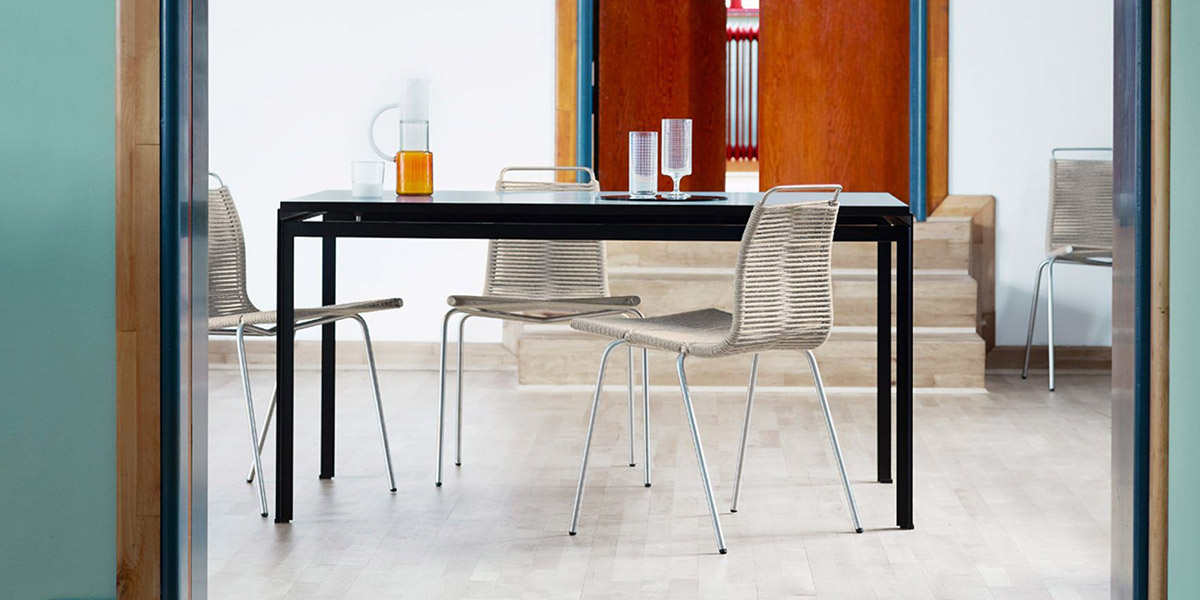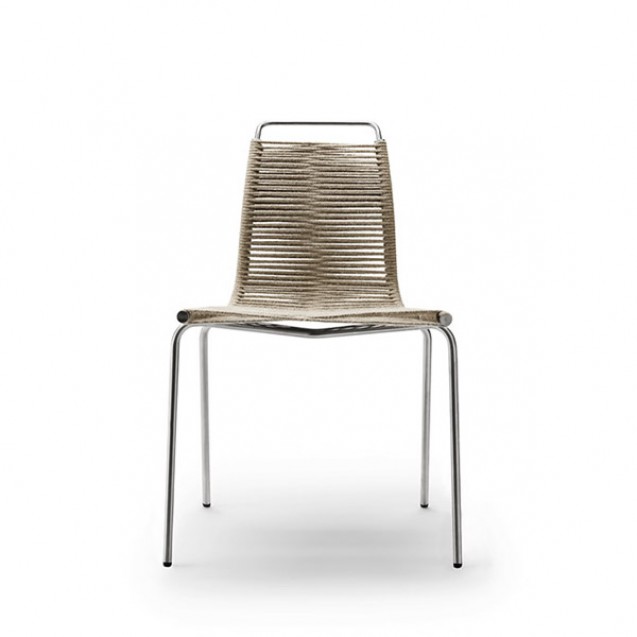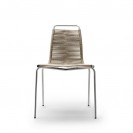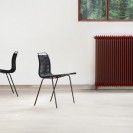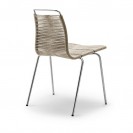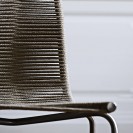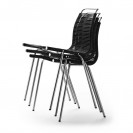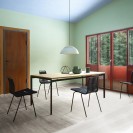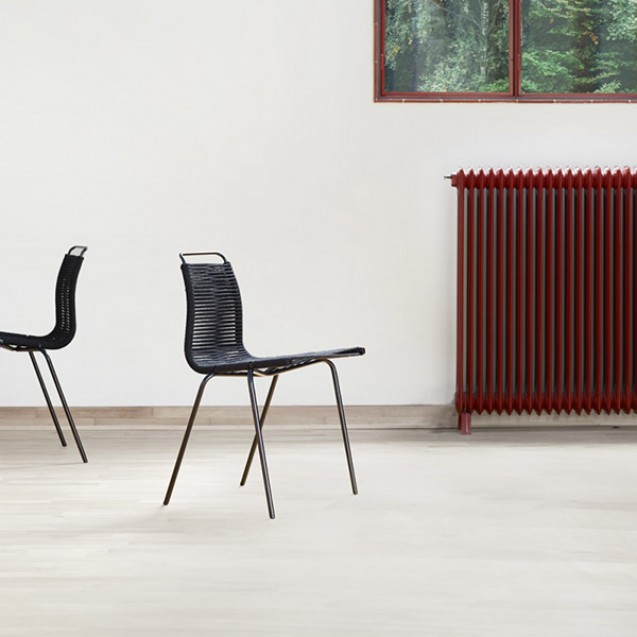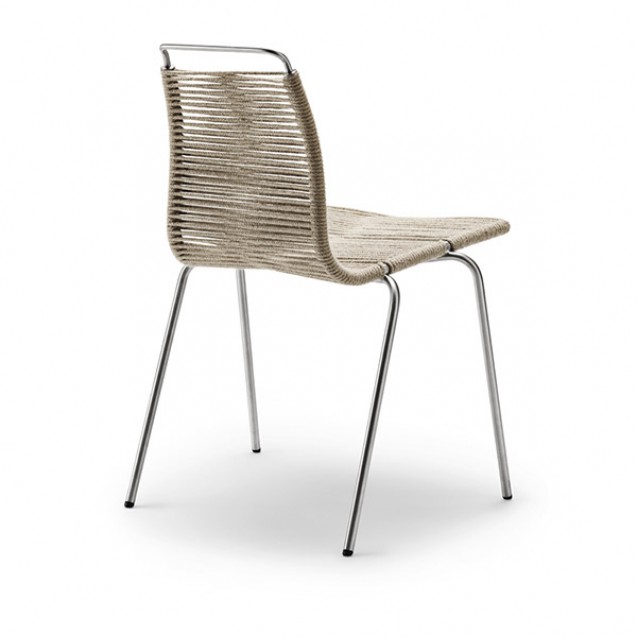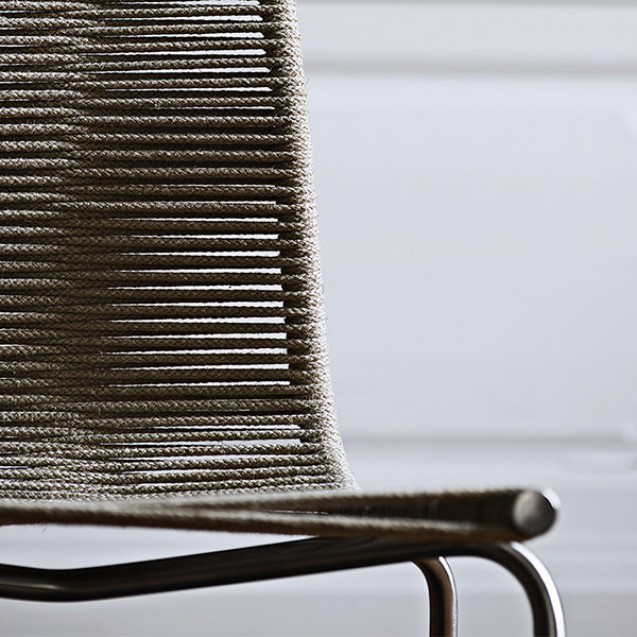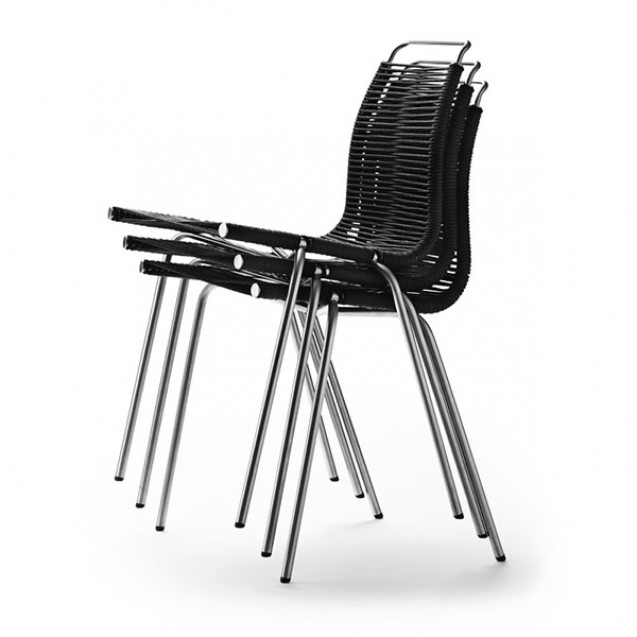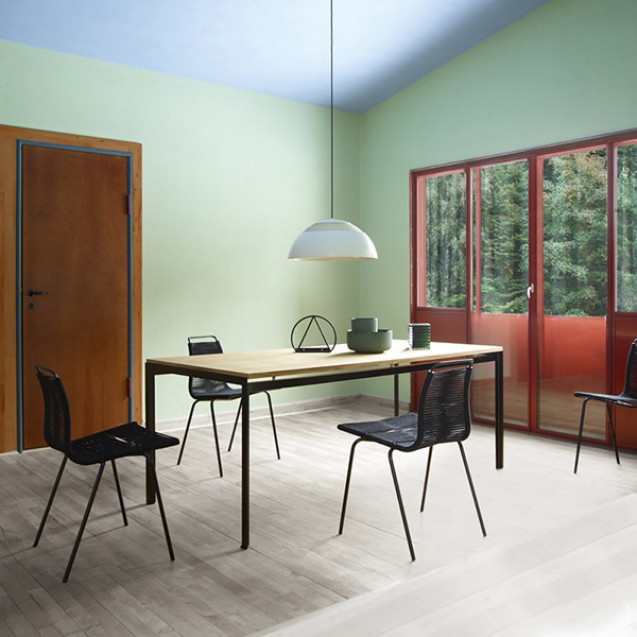PK1
The
PK1 dining chair, designed by Poul Kjærholm in 1955, is an early example of
Kjærholm's unique ability to combine steel with organic materials. The design
has an understated look which requires skilled craftsmanship and an in-depth
understanding of the inherent nature of the materials.
Kjærholm's
PK1 chair comprises a steel frame and a combined flag halyard seat and
backrest, which ensures a high degree of comfort and visual lightness that will
look at home in both modern and classic interiors.
The
PK1 is available in several different steel variants combined with natural or
black flag halyard, and it is possible to stack up to five chairs at a time,
making the PK1 a versatile and practical dining chair.
The
PK1 is also available as an outdoor version with a stainless steel frame and
weather-resistant flag halyard.
| About Designer | |
|---|---|
Poul Kjærholm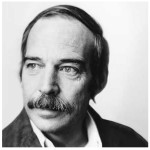 |
A purist,
Poul Kjærholm is known for his modern, functionalist furniture, praised for its
understated elegance and clean lines. His uncompromising goal of "making
form a part of function" helps peel away the superfluous, creating a
refined, timeless and utilitarian object. Throughout his tenure, he insisted on structural
clarity and technical quality, emphasizing its application in the design of
everyday objects by celebrating the assembly details and showing the components
of every object– from nails to screws and joints. His furniture quickly
benchmarked Danish design, as did his objects (the PK-Bowl is one of our
favorites!), leading the way in the development of the austere, yet functional
style that would help define this era.
It’s not surprising that his rigor and attention
to detail have won him a place in the permanent collection of the Museum of
Modern Art in New York, the V&A Museum in London and other museum
collections in Denmark, Norway, Sweden and Germany. |
